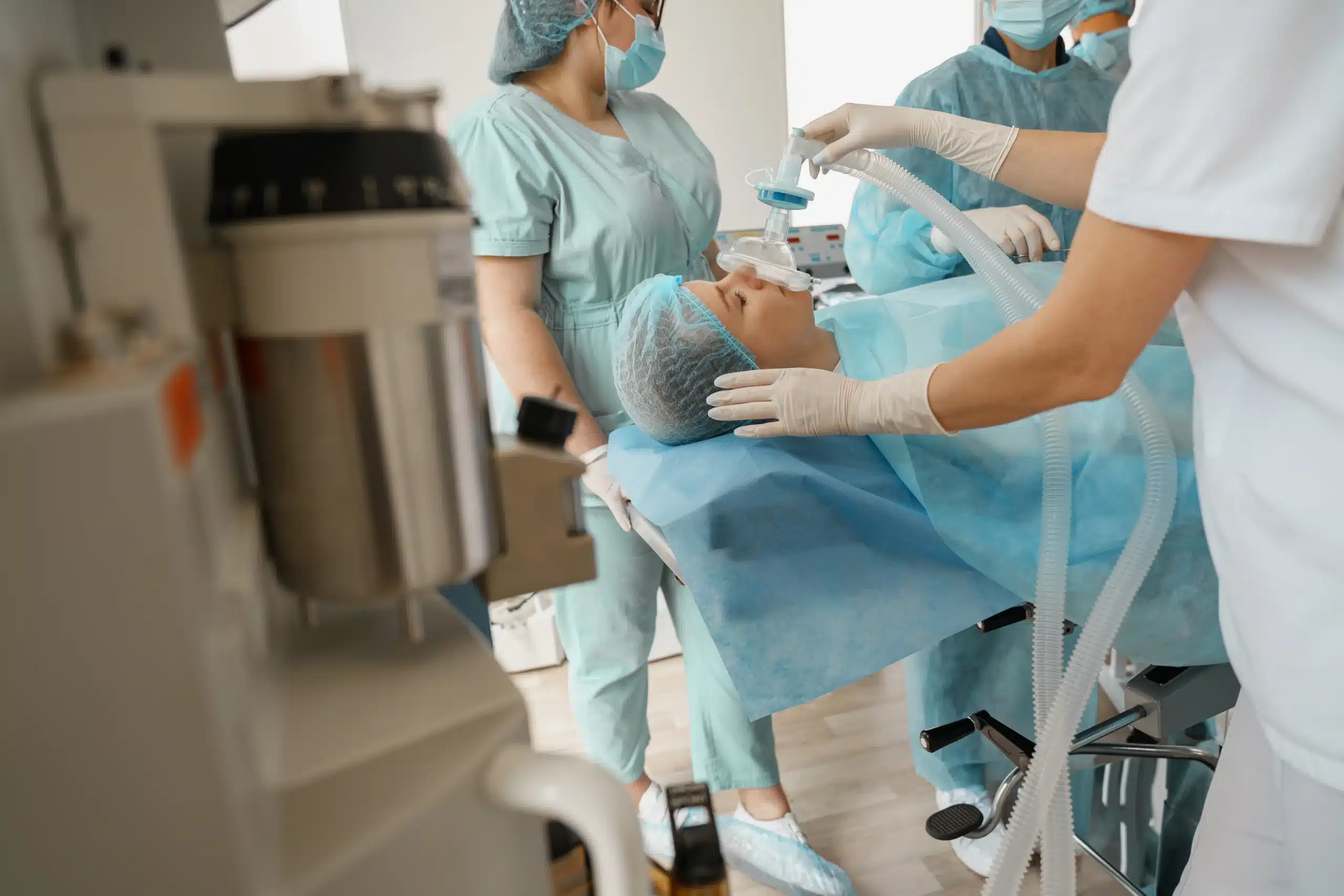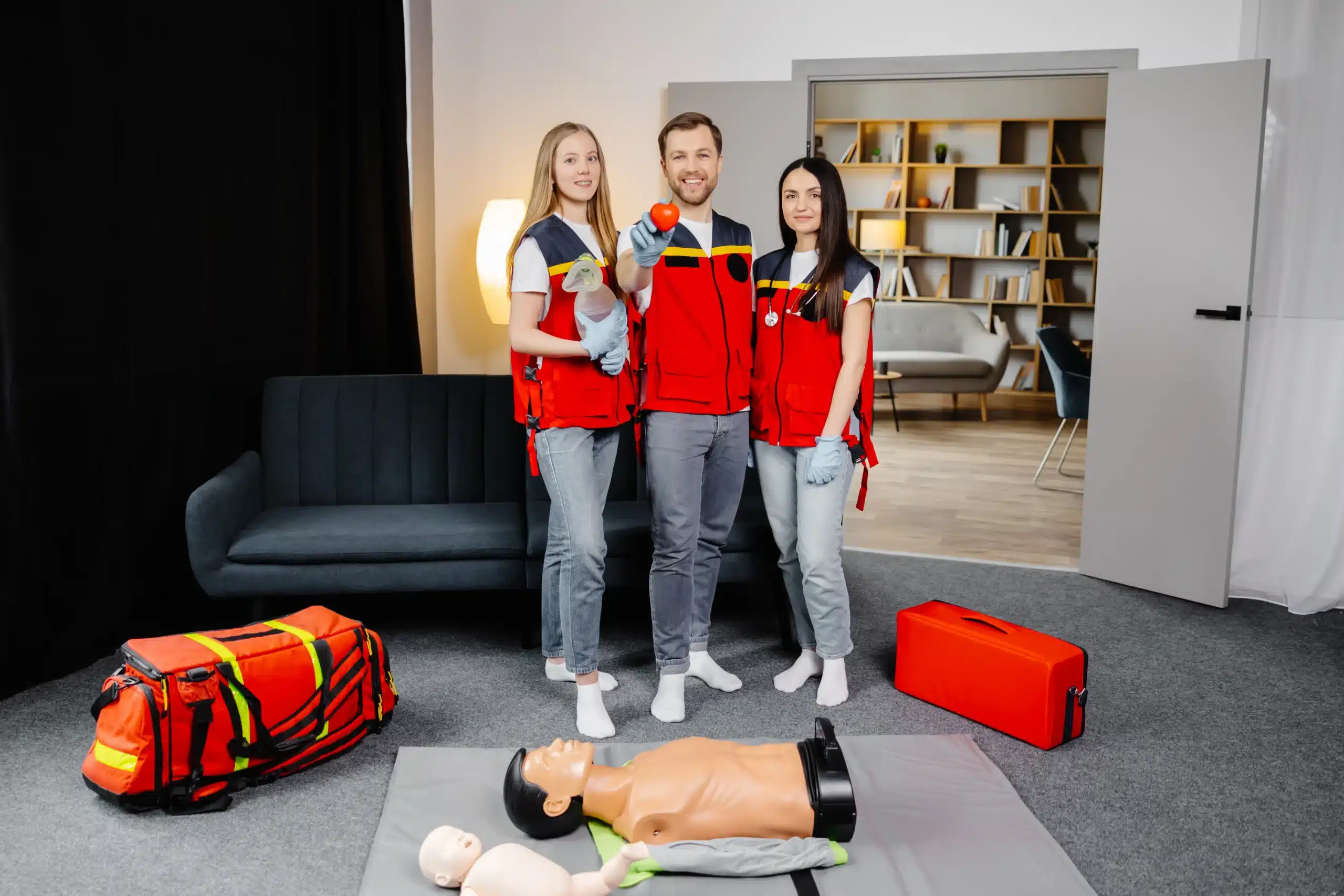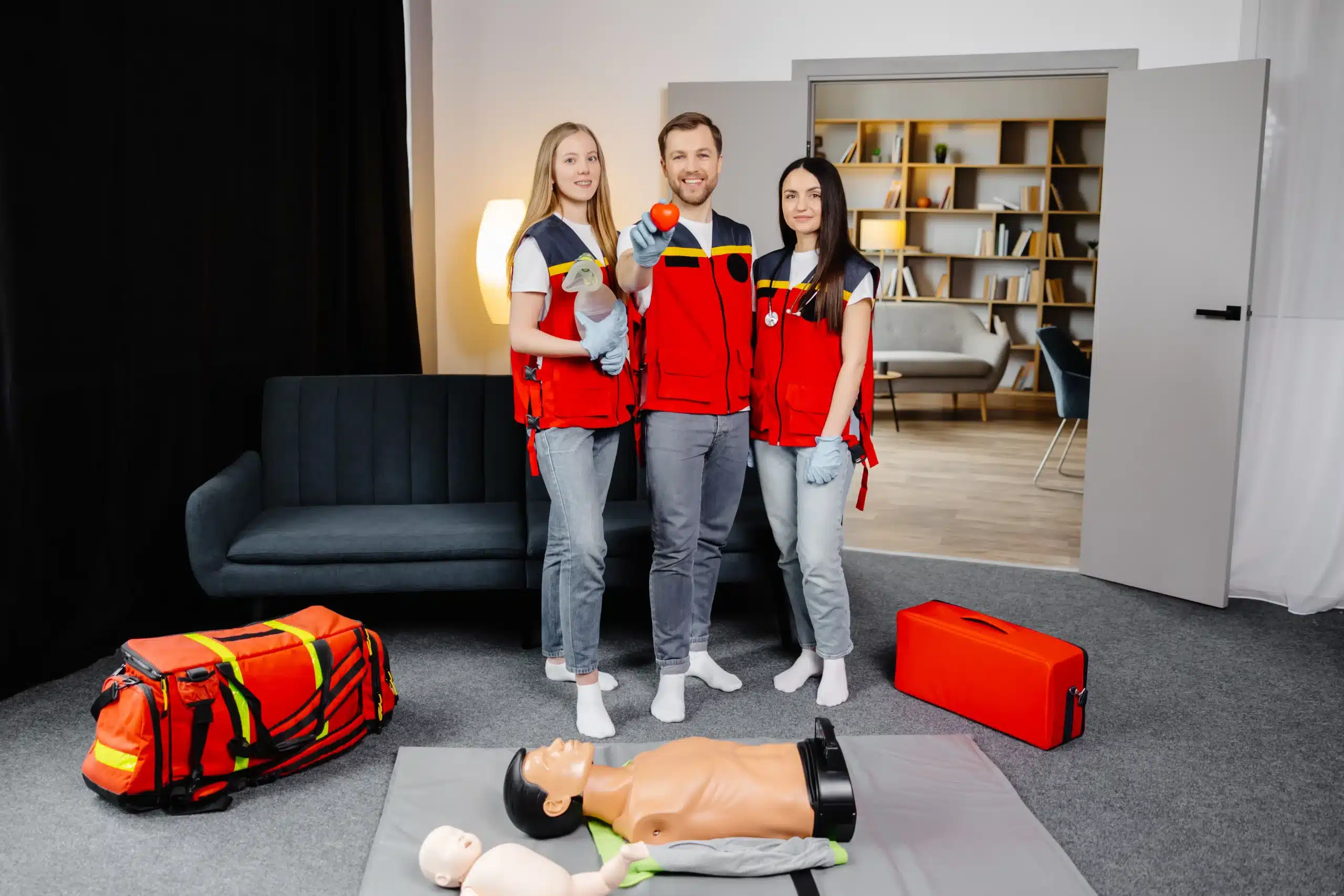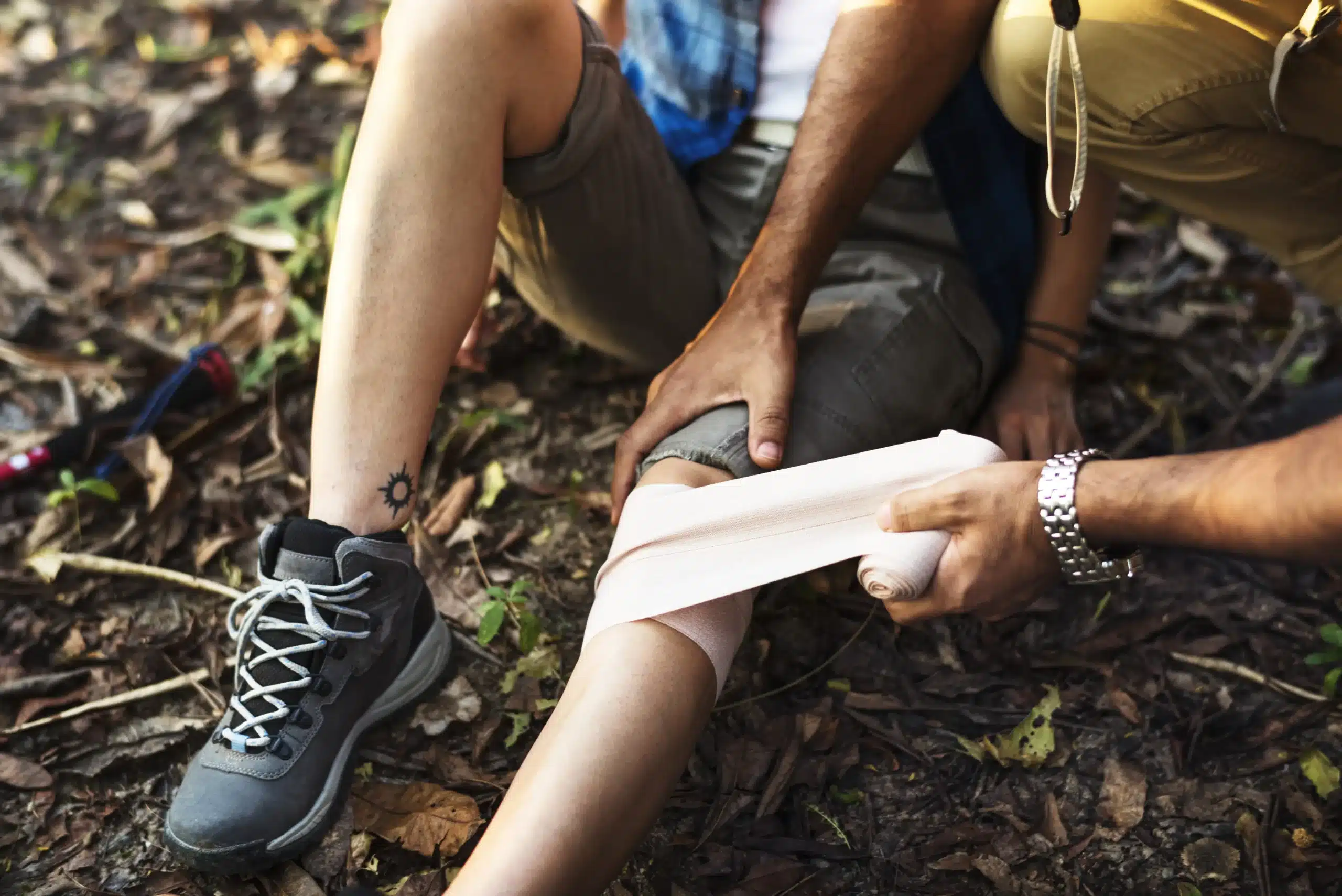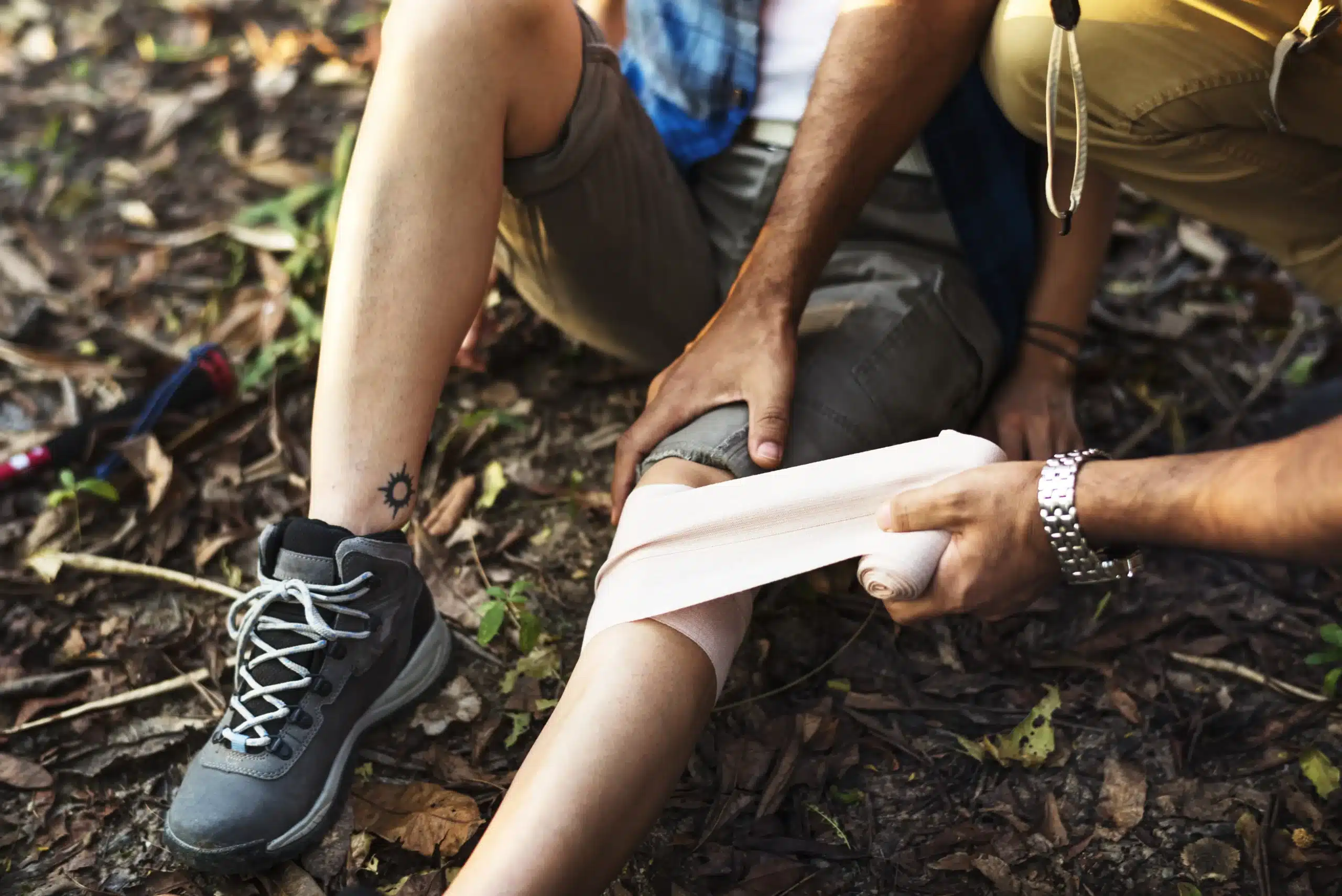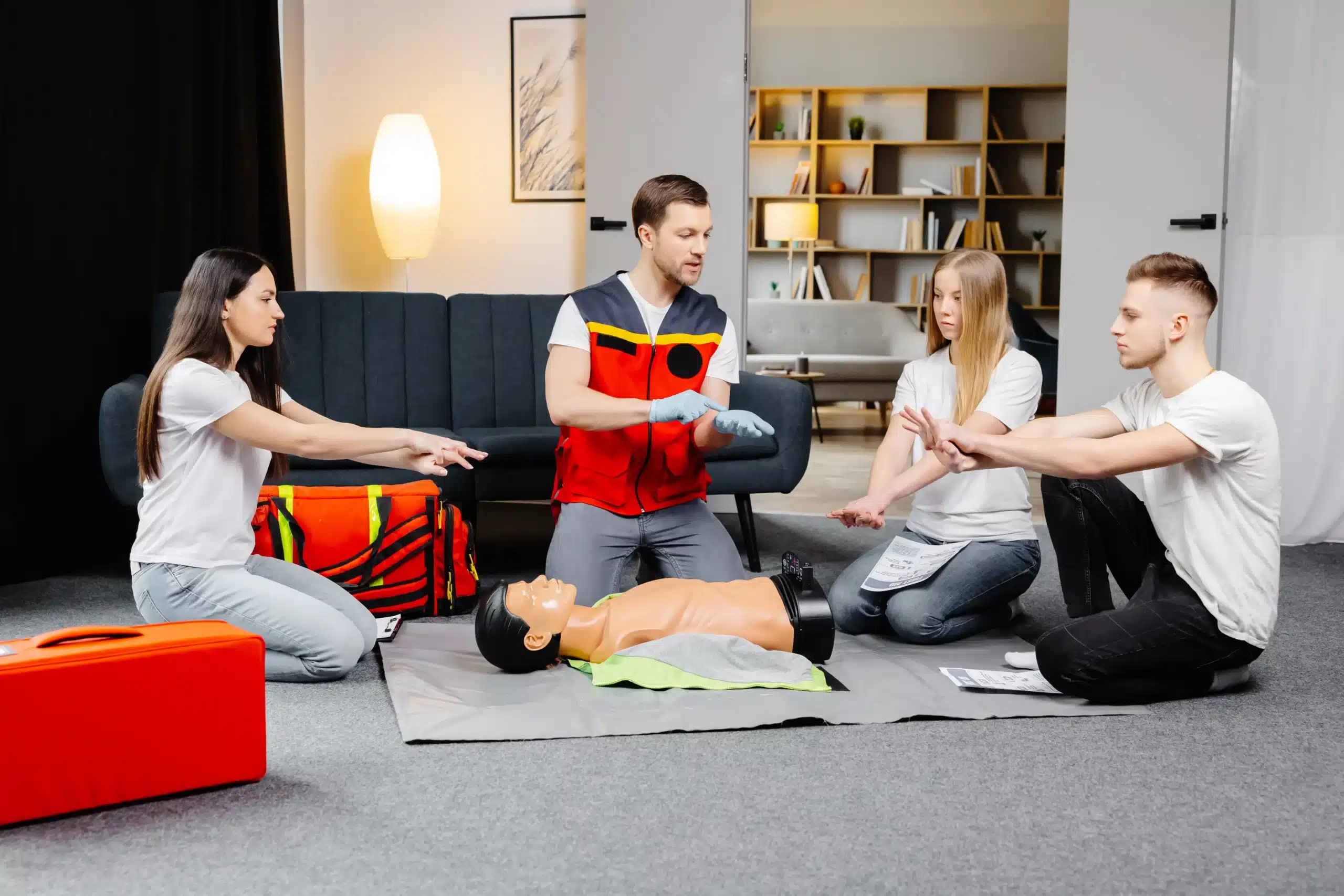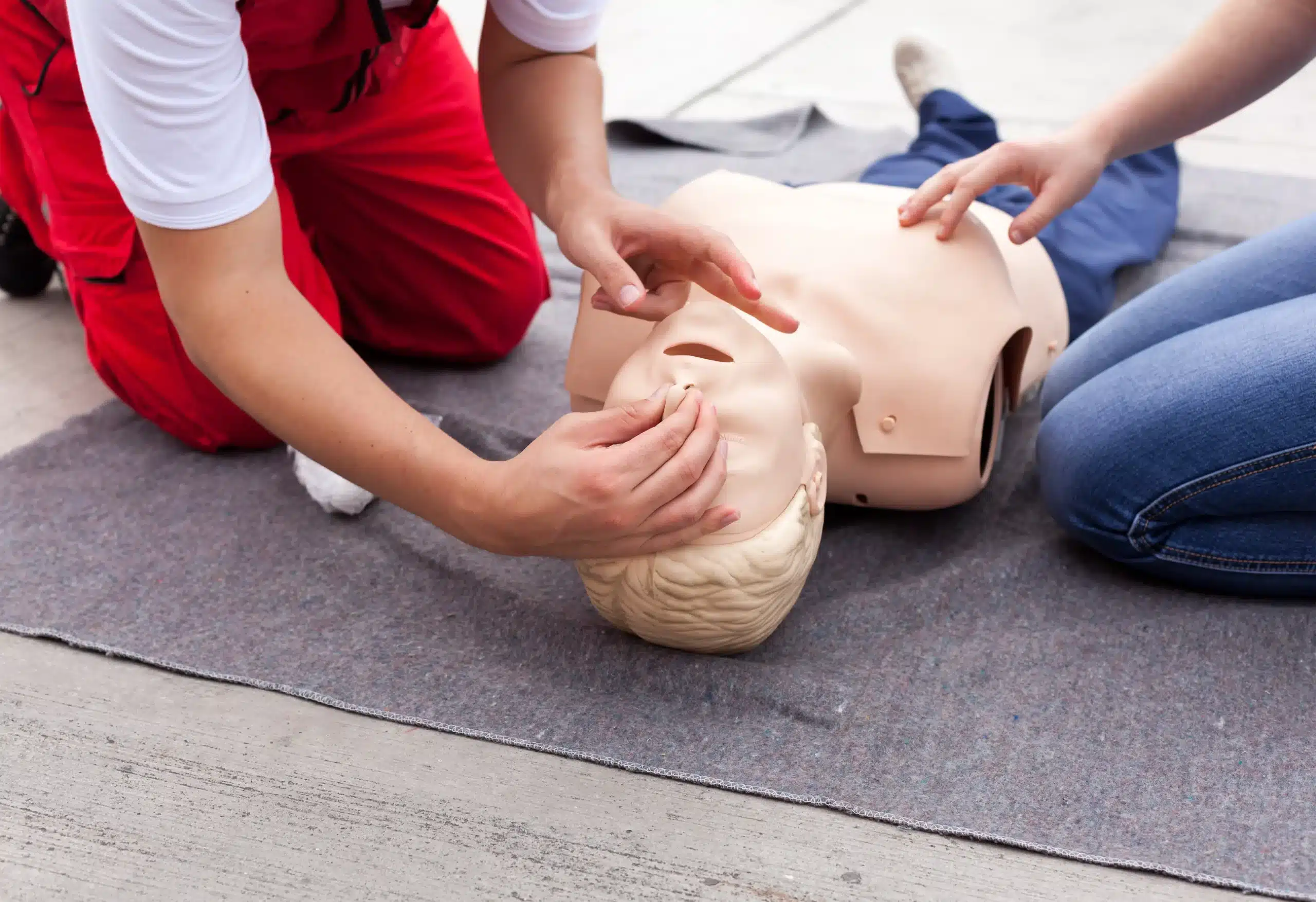Considering a career as a lifeguard in Napa? It’s a demanding but fulfilling role that requires more than just strong swimming skills. CPR is an absolute must-have for any aspiring lifeguard. This comprehensive guide covers everything you need to know about CPR classes for lifeguards in Napa. We’ll explore different types of certifications, where to find local training, essential skills you’ll learn, and even debunk some common CPR myths. Plus, we’ll provide resources to help you navigate the process of becoming a certified lifeguard. So, if you’re ready to learn how to keep others safe in the water, keep reading!
Key Takeaways
- Lifeguard CPR demands specialized skills: It’s not just basic CPR—it includes water rescue techniques, first aid for water-related injuries, and the ability to respond to emergencies in aquatic environments. Look for comprehensive training that covers these areas.
- Find the right CPR class in Napa: Consider your schedule, learning style, and career goals when choosing a course. Napa offers various options, including Safety Training Seminars, Napa Valley College, and the American Red Cross. Research different providers to find the best fit.
- Stay current with your certification: CPR skills need refreshing. Recertify every two years and pursue continuing education opportunities to maintain your proficiency and confidence in responding to emergencies. Regular practice is key.
What are Lifeguard CPR Classes?
Lifeguard CPR classes give future lifeguards the skills to handle emergencies in aquatic environments. These specialized courses go beyond basic CPR, covering first aid and how to use an AED. The American Lifeguard Association stresses that lifeguard CPR training is crucial for keeping someone alive until paramedics arrive. Quick thinking and effective responses are essential, and these classes prepare lifeguards to act decisively in crises.
Beyond technical skills, lifeguard training focuses on practical application in real-world scenarios. The City of Napa’s lifeguard program uses videos, group discussions, and hands-on practice to build teamwork, rescue, and surveillance skills. This makes sure lifeguards are not only proficient in CPR, AEDs, and first aid, but also confident managing emergencies. They learn to assess risks, anticipate problems, and work together to keep everyone safe. This well-rounded training is essential for any aspiring lifeguard.
Types of Lifeguard CPR Classes
Lifeguarding demands top-notch skills, especially in CPR. Different certifications cater to varying levels of experience and professional needs. Here’s a breakdown of common lifeguard CPR classes:
Basic Life Support (BLS)
The Basic Life Support (BLS) course is the cornerstone for healthcare providers and those in critical roles like lifeguarding. It goes beyond basic CPR, equipping you with the skills to handle cardiac arrest and other emergencies. BLS certification emphasizes high-quality CPR and effective AED use. This makes it a vital credential for lifeguards who need to respond confidently and efficiently in high-pressure situations.
Heartsaver CPR
Heartsaver CPR offers essential lifesaving skills, including CPR. While not exclusively for healthcare professionals, it’s a solid option for lifeguards who may encounter emergencies both on and off duty. This course covers essential techniques to respond effectively to various situations, empowering you to provide immediate assistance when needed.
Specialized Lifeguard Training
Beyond general CPR certifications, specialized lifeguard training programs offer comprehensive preparation for the unique challenges of aquatic environments. These programs cover water rescue techniques, first aid for water-related incidents, and advanced CPR scenarios. They often incorporate a mix of learning methods including videos, group discussions, and hands-on practice. This specialized training ensures lifeguards are well-prepared to handle the diverse emergencies they might face on the job.
Where to Get CPR Certified
Finding the right CPR certification course can feel overwhelming, but several excellent options are available in Napa. Here’s a breakdown of reputable providers to help you in your search:
Safety Training Seminars
If you’re looking for comprehensive training and flexible scheduling, Safety Training Seminars offers a variety of American Heart Association (AHA) courses, including BLS, ACLS, PALS, and CPR/First Aid. They prioritize high-quality instruction at competitive prices, making them a popular choice for healthcare professionals and community members alike. You can explore their course catalog on their website.
American Heart Association
For medical professionals seeking a streamlined certification process, the AHA’s Resuscitation Quality Improvement (RQI) program is a fantastic option. This program offers a modern and efficient way to get your BLS, ACLS, and PALS certifications. It’s a great choice for healthcare providers in Napa looking to maintain their certifications.
Napa Valley College CPR Training Center
The Napa Valley College CPR Training Center is another excellent resource, especially for those seeking basic life support (BLS) certification. Their BLS course equips healthcare professionals with the skills to respond effectively to cardiac arrest and other medical emergencies. Check the Napa Valley College website for more information on their course offerings and schedules.
Red Cross
While the other options focus specifically on CPR and related certifications, the Red Cross offers a broader range of training, including lifeguard certification, which incorporates CPR training. If you’re interested in becoming a certified lifeguard, the Red Cross provides comprehensive programs covering water safety, rescue techniques, and CPR. This could be a great option if you’re looking to combine lifeguard training with your CPR certification.
Essential Lifeguard CPR Skills
As a lifeguard, you’re the first line of defense in a water emergency. Solid CPR skills are non-negotiable. This means being proficient not just in standard CPR, but also in techniques specific to the unique challenges of aquatic environments. Let’s break down the essential skills you’ll need.
Adult, Child, and Infant CPR
CPR is the cornerstone of lifeguard training. You’ll learn how to perform CPR on adults, children, and infants, recognizing the subtle but important differences in technique for each age group. This comprehensive approach ensures you’re prepared to handle any cardiac emergency, from a struggling swimmer to a non-responsive infant. Both Heartsaver and Basic Life Support (BLS) courses cover these essential CPR skills, giving you a solid foundation in responding to cardiac arrest. Knowing how to deliver life-saving compressions and rescue breaths can be crucial in keeping a victim alive until paramedics arrive, as highlighted by the American Lifeguard Association. This training prepares you to respond effectively to cardiac emergencies across all age groups.
AED and BVM Operation
Beyond chest compressions and rescue breaths, lifeguard training equips you with the skills to use an Automated External Defibrillator (AED) and a Bag-Valve-Mask (BVM). AEDs can restore a normal heart rhythm in cases of sudden cardiac arrest, and knowing how to operate one quickly and correctly can dramatically increase a victim’s chances of survival. Similarly, BVMs provide assisted ventilation when rescue breaths alone aren’t enough. Mastering these tools is a vital part of comprehensive lifeguard training.
Water Emergency Response
Lifeguarding isn’t just about performing CPR on the pool deck. You need to know how to recognize and respond to emergencies in the water. This includes recognizing signs of distress, performing in-water rescues, and safely extracting victims from the water. Speed and decisive action are critical in these situations, and proper lifeguard training emphasizes these skills. It’s about combining your CPR knowledge with water rescue techniques to provide the most effective care possible. This training is crucial for maintaining water safety at pools, beaches, and other aquatic environments.
Costs & Class Formats
Knowing the costs and available class formats upfront makes planning your CPR training easier. Let’s break down what you can expect at Safety Training Seminars.
Pricing & Discounts
Safety Training Seminars is committed to providing high-quality training at the most competitive prices in Napa County. We believe that cost shouldn’t prevent anyone from learning these essential, life-saving skills. Check our website for current pricing on BLS, ACLS, PALS, and CPR/First Aid certification courses. We frequently offer discounts, so be sure to check back for special offers.
In-Person, Online, & Hybrid Learning
We offer a variety of course formats to fit your schedule and learning style. Our in-person CPR courses in Napa provide hands-on training with experienced instructors. For those who prefer more flexibility, we also offer blended learning options, combining online coursework with in-person skills sessions. This hybrid approach lets you learn the material at your own pace and then practice your skills in person. Contact us to learn more about our current class formats and find the best fit for you.
Prerequisites & Requirements
Before diving into lifeguard training, it’s helpful to understand the typical prerequisites. These ensure all lifeguards are well-prepared and capable of handling the demands of the job.
Age & Physical Fitness
Age is often the first requirement. Most lifeguard training programs require participants to be at least 15 years old. Beyond age, strong swimming skills and physical fitness are essential. Lifeguards need to perform rescues effectively, sometimes in challenging conditions. The City of Napa’s lifeguard program highlights the importance of hands-on practice, covering rescue techniques, surveillance skills, and teamwork, in addition to First Aid and CPR/AED training. You can learn more about their program through the City of Napa’s resources.
Prior Certifications
Most lifeguard training programs require you to hold current certifications in CPR, First Aid, and AED before you begin. These certifications lay the groundwork for the advanced training you’ll receive in a lifeguard-specific course. The American Lifeguard Association emphasizes the critical role of CPR. Similarly, Napa CPR Classes offers courses like Basic Life Support (BLS) that prepare healthcare professionals (and aspiring lifeguards) to respond to emergencies. Having these certifications in place beforehand allows you to focus on the specialized skills and knowledge needed for lifeguarding.
Choosing the Right CPR Class
Finding the perfect CPR class means considering your schedule, preferred learning style, career aspirations, and the course content itself. Let’s break down how to find the right fit for you.
Match Your Schedule & Learning Style
First, think about your availability. Are you a busy professional who needs a weekend course? Or a student with more flexible daytime options? Napa offers accessible and affordable CPR and first aid training through various providers, including Safety Training Seminars and Napa Valley College, accommodating different schedules. Consider your learning style, too. Do you thrive in hands-on environments, or do you prefer online learning? Knowing this will help you narrow down your options. Safety Training Seminars offers a variety of American Heart Association (AHA) courses, including BLS for healthcare providers, to fit different learning preferences.
Evaluate Course Content & Instructors
Not all CPR classes are created equal. Look closely at what each course covers. Does it include adult, child, and infant CPR? How about AED training? A comprehensive program, like the one offered by Safety Training Seminars, covers these essentials and aligns with AHA standards. Instructors matter just as much as the curriculum. Experienced, certified instructors can make all the difference in your learning. Check reviews and testimonials to get a feel for the instructor’s teaching style and expertise. The City of Napa’s lifeguard training information highlights programs that emphasize hands-on practice, incorporating videos, group discussions, and practical exercises. This type of blended learning can be incredibly beneficial.
Align with Career Goals & Requirements
Consider your career goals. Are you pursuing a career in healthcare, or simply want to gain a valuable life skill? If you’re a healthcare provider, a BLS course is likely required, as explained on BLS and CPR Training’s website. This certification gives you the skills to respond to cardiac arrests and other emergencies in a professional setting. Even outside the medical field, understanding the importance of CPR, as discussed in this article on CPR certification for lifeguards, can inform your decision about the right training level. Choosing the right CPR class is an investment, so take the time to find one that truly works for you.
Maintaining Your Certification
As a lifeguard, your CPR skills are essential for ensuring the safety of others. Staying current with your certifications isn’t just a good idea—it’s often a requirement for continued employment. This section covers how to maintain your lifeguard CPR certification, so you’re always prepared for emergencies.
Renewal Process
CPR certifications, like those for BLS for Healthcare Providers, typically expire after two years. You’ll need to recertify before the expiration date to maintain your active status. Recertification courses are generally shorter than initial certification courses, focusing on a review of key skills and updates to guidelines. Check with your certifying organization, such as the American Heart Association or the American Red Cross, for specific renewal requirements. Start the renewal process a month or two before your certification expires to avoid any gaps in your qualification.
Continuing Education
Even between renewals, refreshing your CPR knowledge and skills is beneficial. Regular practice and continuing education can help you stay sharp and confident in your abilities. Look for workshops, online resources, or refresher courses offered by organizations like Safety Training Seminars in Napa. These opportunities can reinforce essential life-saving techniques, including adult, child, and infant CPR, as well as AED use. Staying up-to-date on the latest CPR guidelines and best practices ensures you’re providing the most effective care possible during an emergency. Consistent learning is key to maintaining proficiency in lifeguarding and CPR.
CPR Myths Debunked
It’s important to separate fact from fiction when it comes to CPR. Misinformation can cost precious time in an emergency. Let’s clear up a few common misconceptions:
Age-Specific CPR
CPR techniques do vary slightly depending on whether you’re assisting an adult, child, or infant due to differences in body size and physiology. However, the core principles remain the same—chest compressions and rescue breaths (if you are trained). It’s always best to receive proper training to learn these modifications so you can confidently administer CPR to anyone who needs it. Don’t let the idea of different techniques intimidate you—the most important thing is to act quickly. Resources like Cascade Training emphasize that CPR is a powerful tool that can significantly increase the chances of survival. Check out our CPR courses in Napa to learn more.
Scope of Lifeguard Training
CPR training is a cornerstone of lifeguard certification. It equips lifeguards with the skills to respond effectively to drowning incidents and other medical emergencies that may arise in aquatic environments. Without these skills, lifeguards would be ill-prepared to handle critical situations. CPR Certification Los Angeles discusses the crucial role CPR plays in a lifeguard’s ability to make a life-or-death difference. It’s not just about rescuing someone from the water; it’s about providing immediate medical assistance until professional help arrives.
Who Can Perform CPR
One of the biggest myths surrounding CPR is that only medical professionals should perform it. This isn’t true. Anyone can—and should—perform CPR in an emergency. Even hands-only CPR, involving only chest compressions, can significantly improve someone’s chances of survival. PALS St. Louis clarifies this common misconception, emphasizing that bystander intervention is often the first link in the chain of survival. Don’t hesitate to act if you see someone in need. Your actions could save a life.
Resources for Aspiring Lifeguards
So, you’re ready to take the plunge and become a certified lifeguard? Awesome! It’s a rewarding role that demands both physical prowess and serious knowledge. Here are some resources to help you dive in:
Local Training
Napa offers accessible and affordable CPR and first aid training. Providers like Safety Training Seminars and Napa Valley College offer the training you’ll need to get started. The Basic Life Support (BLS) course, available through providers like the Napa CPR Training Center at Napa Valley College, is an excellent starting point, especially for those considering a career in healthcare. Safety Training Seminars also provides a range of American Heart Association (AHA) courses, including BLS, ACLS, PALS, and CPR/First Aid. They’re known for their commitment to high-quality, affordable training.
Community & Networking
Connecting with other aspiring lifeguards and experienced professionals is a fantastic way to learn the ropes. The City of Napa’s lifeguard program emphasizes teamwork and provides hands-on practice in essential skills like water rescue, surveillance, First Aid, and CPR/AED. The Napa Fire Department is another great local resource, actively promoting CPR education within the community. Check out their resources and consider participating in their Hands-Only CPR training.
Flexible Scheduling
Juggling work, school, or other commitments? Finding a CPR class that fits your schedule is key. Safety Training Seminars offers a variety of AHA certification courses—including CPR, BLS, ACLS, PALS, and First Aid—with options to suit different schedules and learning styles. Their courses cater to various skill levels, from beginners to seasoned medical professionals, and their certification cards are valid for two years. This flexibility makes it easier to get certified and stay current with your lifeguarding credentials.
Related Articles
- Your Guide to CPR Training in American Canyon – Napa CPR Classes
- BLS Classes in Vallejo: The Complete Guide – Napa CPR Classes
- CPR & First-Aid in Vallejo: Your Comprehensive Guide – Napa CPR Classes
- BLS Certification Near Me: A Practical Guide – Napa CPR Classes
- CPR Certification in Napa: Your Comprehensive Guide – Napa CPR Classes
Frequently Asked Questions
What is the difference between BLS and Heartsaver CPR?
BLS (Basic Life Support) certification is designed for healthcare providers and those in critical roles like lifeguarding, covering advanced CPR techniques and the use of an AED. Heartsaver CPR, while valuable for anyone, focuses on essential life-saving skills for the general public and may not meet the requirements for professional lifeguarding.
If I want to be a lifeguard, do I need specific lifeguard training beyond CPR certification?
Yes. While CPR certification is a crucial prerequisite, dedicated lifeguard training programs provide specialized instruction in water rescue techniques, first aid for water-related incidents, and advanced CPR scenarios specific to aquatic environments. These programs often include practical exercises and simulations to prepare you for real-world situations.
How much does lifeguard CPR training cost, and what formats are available?
Costs vary depending on the provider and the type of course. Safety Training Seminars, for example, offers competitive pricing and often has discounts available. They also provide flexible learning formats, including in-person, online, and blended learning options to accommodate different schedules and preferences. Check their website for the most up-to-date pricing and course offerings.
Are there any age or physical requirements for lifeguard training?
Generally, you must be at least 15 years old and possess strong swimming skills and overall physical fitness. Lifeguarding is a physically demanding job, requiring the ability to perform rescues and respond effectively in emergency situations. Check with specific programs for their exact requirements.
How do I maintain my lifeguard CPR certification once I’ve earned it?
Most CPR certifications are valid for two years. You’ll need to recertify before the expiration date to maintain your active status. Look for recertification courses offered by your original certifying organization or other reputable providers. Continuing education and regular practice are also highly recommended to keep your skills sharp.
